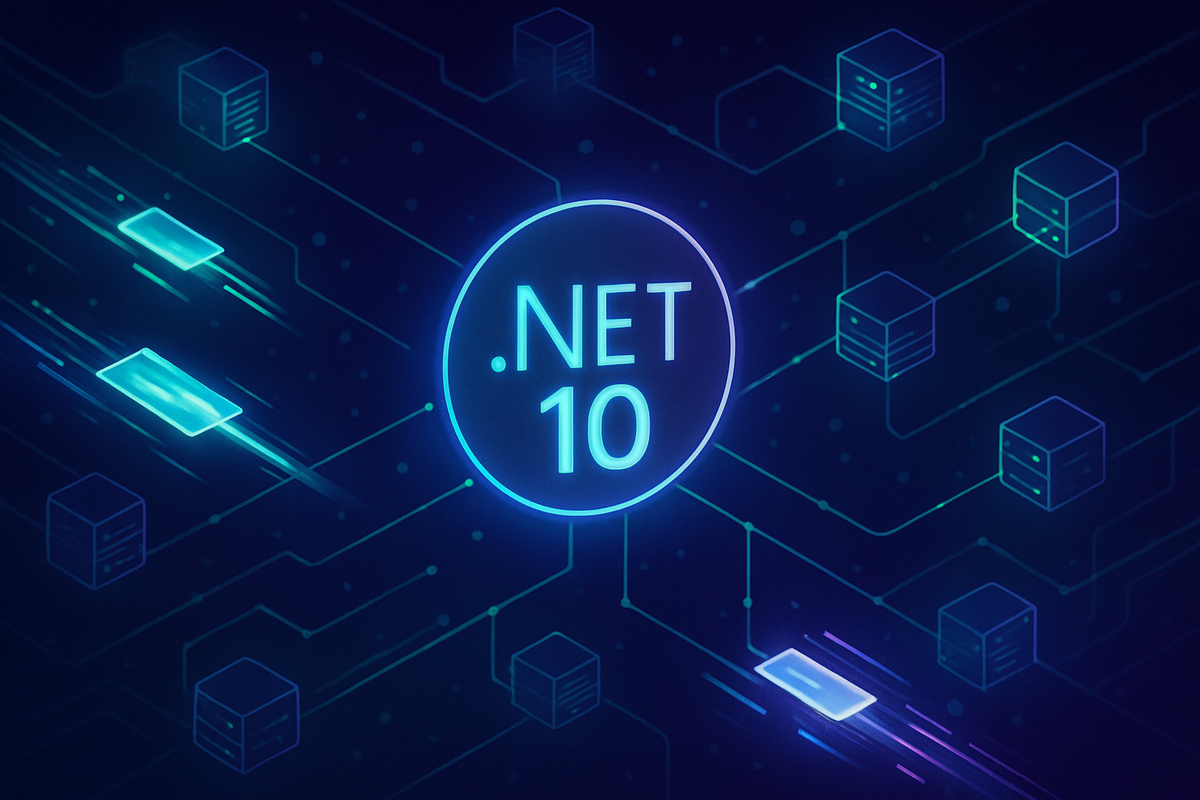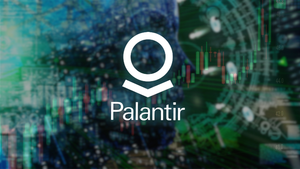
REDMOND, WA – October 1, 2025 – The software development landscape is on the cusp of a significant evolution with the impending general availability of .NET 10, currently in its Release Candidate 1 (RC1) phase and slated for a November 2025 launch. This Long-Term Support (LTS) release promises not only a more streamlined developer experience through "file-based applications" but also crucial under-the-hood enhancements that could reshape how distributed systems interact with and manage data, particularly through file operations. As businesses increasingly rely on highly scalable and resilient distributed architectures, .NET 10's approach to simplifying development while boosting performance for file-centric workflows is poised to become a critical factor in the next generation of enterprise applications.
The core of this shift lies in .NET 10's dual strategy: making C# more accessible for scripting and utility tasks, and simultaneously fortifying its foundation for complex cloud-native deployments that often involve distributed file storage. This strategic move by Microsoft (NASDAQ: MSFT) aims to empower developers to build more agile, efficient, and robust distributed systems, leveraging both the simplicity of single-file execution and the advanced orchestration capabilities of companion frameworks like .NET Aspire.
Unpacking .NET 10's Vision for Distributed File Management
.NET 10 introduces a nuanced approach to "file-based applications," extending beyond the traditional understanding of local file system interactions. At its most basic level, the platform simplifies C# scripting by allowing developers to execute single .cs files directly, much like a shell script, without the need for a full .csproj project file. This feature significantly lowers the barrier to entry for creating lightweight utilities, automation scripts, or rapid prototypes that might interact with distributed resources or configuration files.
However, the more profound implications for distributed systems stem from .NET 10's broader runtime and library enhancements, combined with its tight integration with cloud-native frameworks. As of October 1, 2025, with General Availability expected next month, .NET 10 is designed to provide a more performant and robust environment for file I/O and data processing. Key improvements include significant advancements in JIT compilation, method devirtualization, and stack allocations, all of which contribute to faster execution of file-intensive logic within distributed services. For instance, updates to core libraries, such as enhanced ZipArchive performance through lazy entry loading and more efficient JSON serialization, are directly relevant for processing and transferring large volumes of data—often file-based—across a distributed network.
The true power for distributed file-based applications, however, is unlocked through its synergy with .NET Aspire. Introduced earlier and continually refined, .NET Aspire 9.5 and its subsequent iterations are designed to simplify the development, deployment, and management of distributed applications. This framework provides the orchestration layer necessary to connect various services, including those that rely on distributed file storage, ensuring seamless service discovery, configuration management, and environment variable handling in complex cloud environments like Kubernetes, Azure Container Apps, or Docker. This combination allows developers to build robust microservices that can efficiently read from and write to shared distributed storage solutions, abstracting away much of the underlying complexity.
Initial reactions from the developer community have been largely positive, particularly regarding the scripting capabilities and the promise of a more performant runtime. However, the success of truly distributed file-based applications will hinge on how effectively developers integrate these .NET 10 features with sophisticated distributed file systems and cloud storage solutions.
Market Winners and Losers in the Distributed File Revolution
The advent of .NET 10's enhanced capabilities for file-based applications in distributed systems is set to create distinct winners and losers across the technology and financial sectors.
Microsoft (NASDAQ: MSFT) stands as a clear winner. As the steward of the .NET ecosystem, the company further solidifies its position as a leading platform provider for enterprise and cloud-native development. The focus on simplified developer experience combined with robust distributed system support is likely to drive increased adoption of .NET, particularly within its Azure cloud platform. Increased usage of .NET translates directly into greater consumption of Azure services like Azure Blob Storage, Azure Files, Azure Kubernetes Service, and Azure Container Apps, where these distributed file-based applications would reside.
Cloud providers, including Amazon (NASDAQ: AMZN) with AWS and Alphabet (NASDAQ: GOOGL) with Google Cloud, will also benefit indirectly. While .NET 10 provides the application framework, the underlying distributed storage and compute infrastructure remains crucial. As more sophisticated .NET distributed applications are built, demand for scalable object storage (e.g., AWS S3, Google Cloud Storage), managed file services (e.g., Amazon EFS, Google Cloud Filestore), and container orchestration services will naturally increase across all major cloud platforms. Companies specializing in cloud infrastructure and managed services will see a boost in demand.
On the other hand, software development firms and consultancies heavily invested in older, less efficient frameworks for distributed systems may face pressure to upskill their teams in .NET 10 and cloud-native architectures. Those slow to adapt might lose out on projects requiring modern, performant distributed file processing. Companies offering niche, proprietary distributed file system solutions that lack seamless integration with modern cloud-native frameworks like .NET Aspire might also see their market share erode as developers opt for more integrated and open solutions. Furthermore, legacy systems relying on traditional, monolithic file servers will find it increasingly difficult to compete with the agility and scalability offered by .NET 10's distributed approach.
Broader Implications for Software Architecture and Industry Trends
.NET 10's emphasis on file-based applications within distributed systems aligns perfectly with several broader industry trends, signaling a significant shift in software architecture. The push towards highly decoupled microservices architectures will find a strong ally in .NET 10, where individual services might interact with shared distributed files or message queues that carry file-like data. The simplified scripting capability also supports the growing trend of serverless computing and edge computing, where small, single-purpose functions or agents need to quickly process data—often from files—at the edge or in response to events, without the overhead of a full application stack.
This evolution will inevitably have ripple effects on competing platforms and frameworks. While Java and Node.js ecosystems already have robust solutions for distributed systems and file handling, .NET 10's LTS status, combined with performance improvements and the Aspire framework, presents a compelling alternative that could draw developers. This competition fosters innovation across the board, potentially leading to similar enhancements in other language runtimes and frameworks.
From a regulatory and policy standpoint, the increasing reliance on distributed file systems, especially across cloud boundaries, intensifies concerns around data governance, security, and compliance. Ensuring data consistency, integrity, and privacy across geographically dispersed file stores becomes paramount. Regulations like GDPR, CCPA, and industry-specific compliance standards (e.g., HIPAA for healthcare) will necessitate robust auditing, encryption, and access control mechanisms built into these distributed file-based applications. Developers using .NET 10 will need to pay meticulous attention to these aspects, leveraging the platform's security features while integrating with the security offerings of their chosen cloud providers. Historical precedents, such as the challenges faced by early distributed databases in ensuring strong consistency, serve as a reminder that the architectural benefits must be carefully balanced with operational realities and regulatory demands.
The Road Ahead: Short-term Adaptations and Long-term Vision
The immediate future following .NET 10's general availability in November 2025 will see a period of adaptation and experimentation. In the short term, developers will focus on leveraging the new scripting capabilities for utility applications and exploring how the runtime enhancements can improve existing distributed services. Companies will begin to evaluate migrating critical components to .NET 10, particularly those with heavy file I/O requirements, to capitalize on performance gains and the LTS guarantee. Strategic pivots will involve training development teams on the new features, especially the integration with .NET Aspire for streamlined cloud-native deployments.
Looking further ahead, .NET 10 sets the stage for a more composable and efficient future for distributed systems. The long-term possibilities include the proliferation of highly specialized microservices that interact seamlessly with various distributed data stores, enabling more sophisticated real-time data processing and analytics. Market opportunities will emerge for specialized tools and services that simplify the management, monitoring, and security of .NET 10-based distributed file systems. This could include advanced observability platforms, data consistency validation tools, and specialized consulting services for migrating legacy systems to this modern architecture. We may also see the rise of new application types that were previously too complex or resource-intensive to build, such as highly distributed content management systems or scientific data processing pipelines. Potential scenarios range from rapid adoption driving significant cloud infrastructure growth to a more gradual, phased transition as enterprises carefully assess the benefits against migration costs and complexities.
A New Horizon for Enterprise Software
In summary, .NET 10 represents a pivotal moment in the evolution of software architecture, particularly for distributed systems interacting with file-based data. Its dual focus on simplifying developer experience through "file-based applications" (scripting) and bolstering the underlying runtime for performant distributed operations, especially when paired with .NET Aspire, offers a compelling vision for the future. Key takeaways include enhanced developer productivity, significant performance improvements for file-intensive workloads, and a robust framework for building cloud-native distributed applications.
Moving forward, the market will closely watch the adoption rates of .NET 10, the effectiveness of its integration with various cloud platforms, and the emergence of best practices for managing data consistency and security in these new architectures. Investors should monitor companies like Microsoft (NASDAQ: MSFT) for continued innovation in the .NET ecosystem, as well as cloud providers such as Amazon (NASDAQ: AMZN) and Alphabet (NASDAQ: GOOGL) for increased consumption of their distributed storage and compute services. The lasting impact of .NET 10 will be measured not just by its technical merits, but by its ability to empower developers to build more resilient, scalable, and efficient distributed systems that can meet the ever-growing demands of the digital economy.
This content is intended for informational purposes only and is not financial advice.







